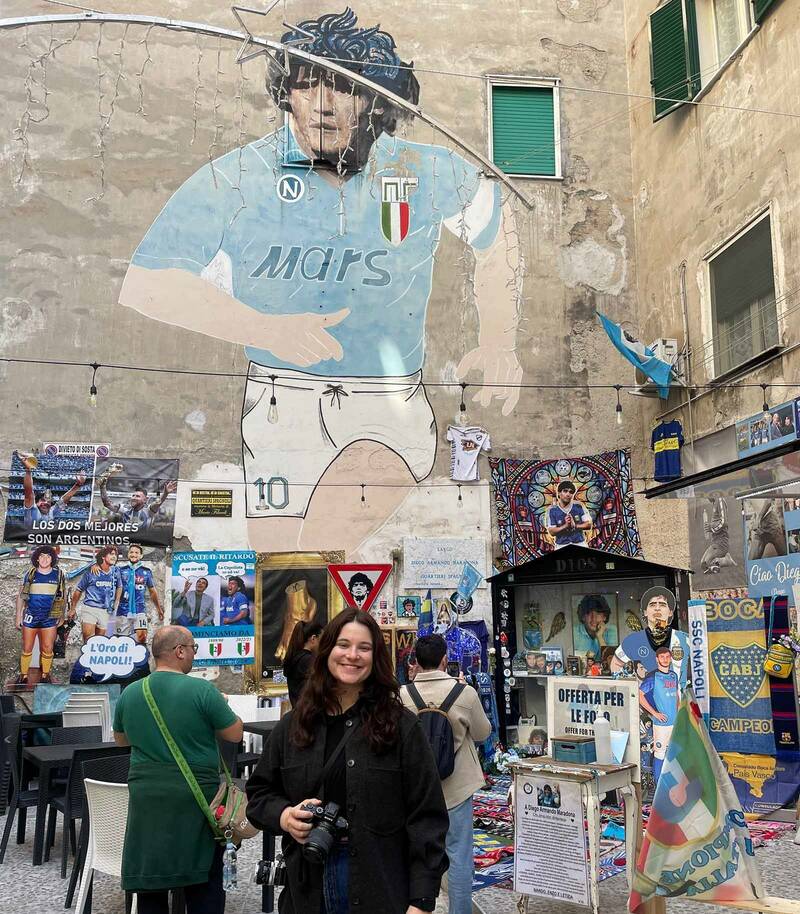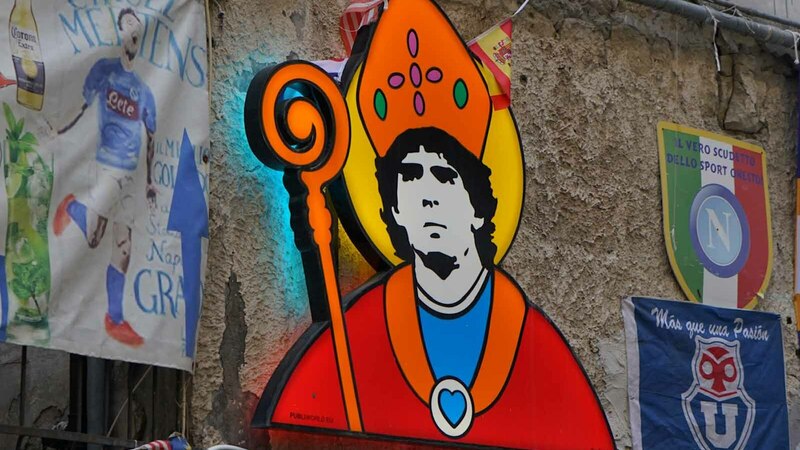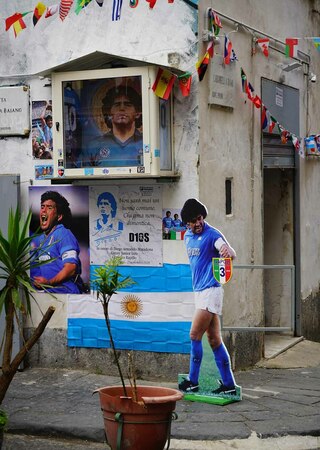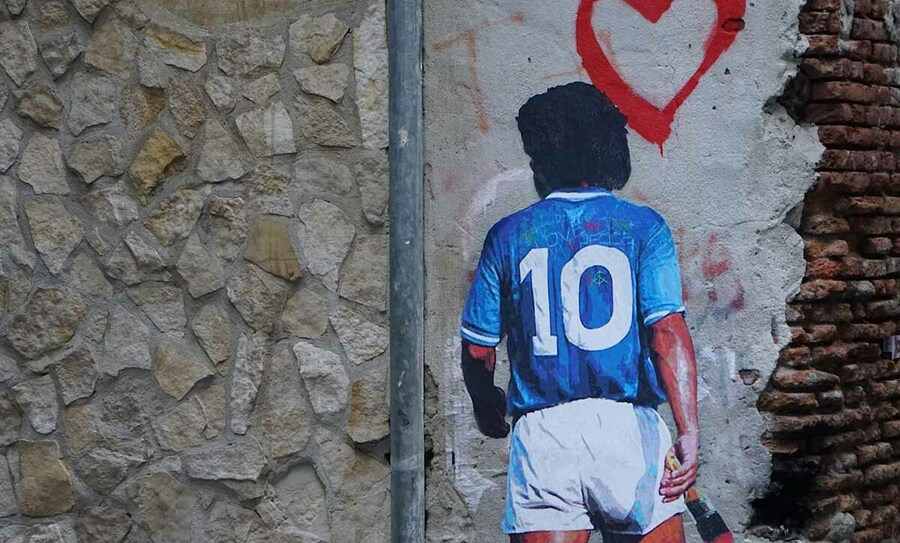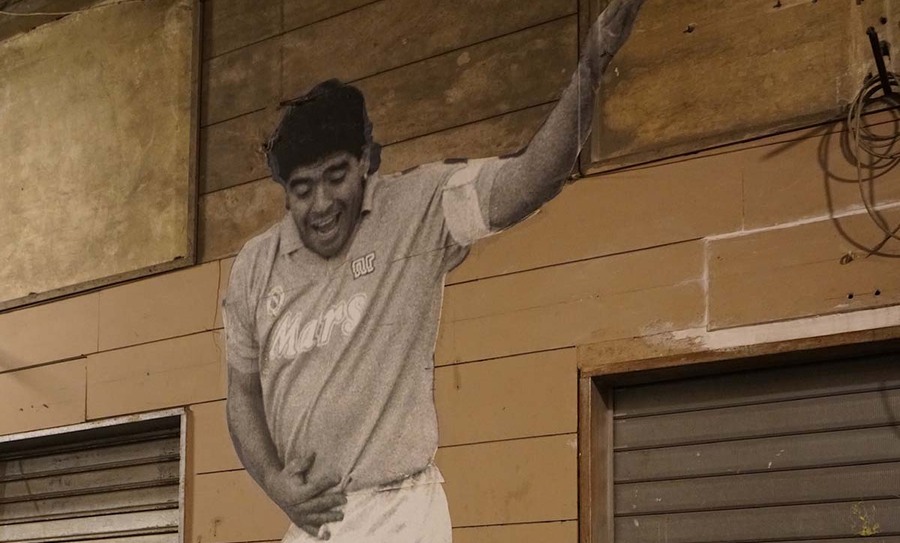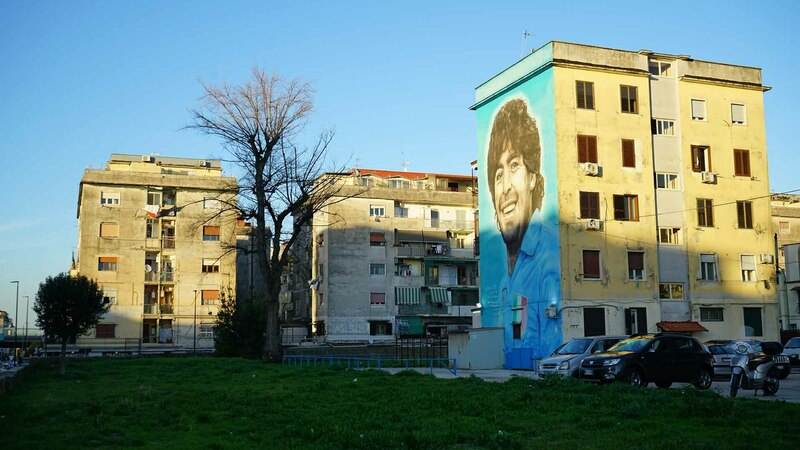
Maradona: sport, visual culture, and identity in Naples
Maradona è Napoli
The city of Naples prides itself on a rich history steeped in faith, superstition, and tradition, with its inhabitants known for their deep devotion to their patron saints, especially San Gennaro, whose veneration is evident in the numerous small shrines scattered throughout the city. However, in Naples, there is also another saint, the people’s saint — global soccer legend Diego Armando Maradona (1960-2020).
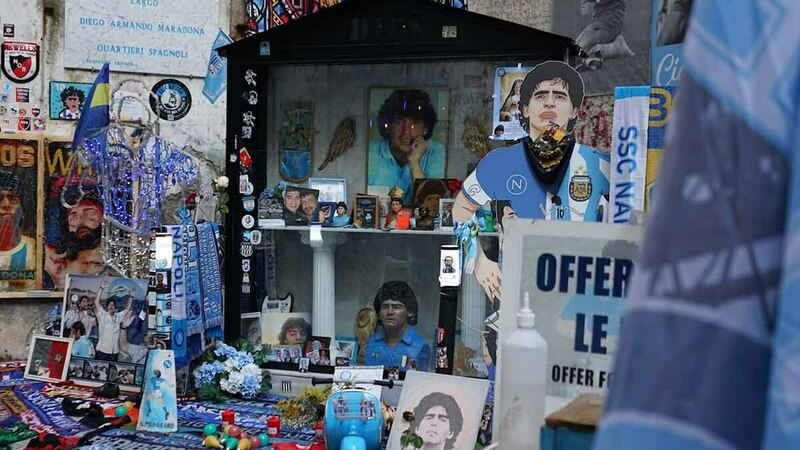
Diego Maradona is widely regarded as one of the world’s all-time greatest footballers. Born and raised in Argentina, Maradona's time in Naples profoundly impacted him and the city. During his seven-year tenure at S.S.C. Napoli from 1984 to 1991, Maradona led the team to two Serie A titles, making history as the first southern Italian team to achieve such success. But his influence on Naples went beyond his athletic achievements. Upon his passing in 2020, the Mayor of Naples declared, "Maradona è Napoli" — “Maradona IS Naples.”
I first discovered the extent of the city’s profound admiration for Diego Maradona during my junior year abroad in Bologna. My local friend had taken it upon himself to show me around the city and acquaint me with the local culture. One afternoon, he told me we would be visiting a church, and I imagined the grand Gothic and baroque architecture of the cathedral we had seen the day before. To my surprise, we arrived at a building adorned with a 40-foot-high mural of the football hero below a sea of candles, flowers, banners, and what can only be described as devotional items, all dedicated entirely to Maradona.
Here people gather to pay respects, take photos, and buy memorabilia of every kind.
Though unique, this mural is not the exception in the city, Maradona is everywhere. His name is stitched onto shirts, painted on the walls, and etched into the hearts of the people, many of whom are too young to have ever seen him play live. He has taken on a level of divinity in a city where residents call him Dios (God) and even place him, in his sky-blue Società Sportiva Calcio (S.S.C.) Napoli jersey, among the city’s centuries-old traditional handcrafted nativities.
Intrigued by this cultural phenomenon, I decided to make it the focus of my senior thesis in anthropology during my final year at the University of Notre Dame. I embarked on a visual ethnography, combining anthropological research with a photo essay, to explore the extensive and enduring imagery of Maradona in Naples, as well as the historical and socio-political complexities that have helped to preserve his legacy in the city. Thanks to the generous support of the Nanovic Institute for European Studies and the Institute for Scholarship in the Liberal Arts, I was able to travel to Naples over spring break to conduct my ethnographic research.
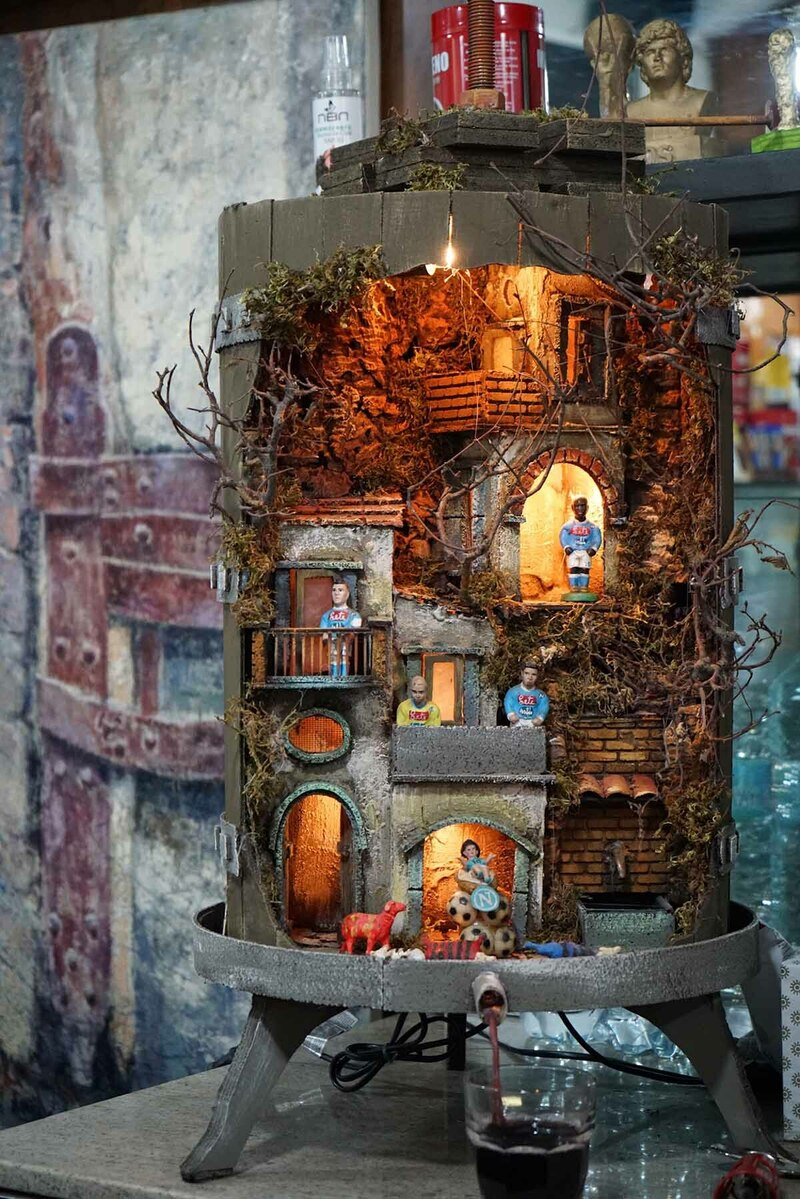
During my stay, I spent a week observing and documenting the public art and visual culture related to Maradona in Naples. I spent time conversing with locals and amassed a significant amount of photographic data that showcases the diverse forms of visual representations of Maradona, such as murals, statues, and street art, and provides insights into their meanings and significance in the local context.
My research has revealed the significant role of visual culture in shaping cultural identity and memory. The various representations of Maradona in Naples are not just products of individual artistic creativity but also reflect broader social and cultural forces that have influenced the city's history and identity. Despite facing social, economic, and political challenges as a peripheral city in Italy and Europe, Naples has managed to maintain its unique regional identity.
Maradona's popularity among its residents lies at the intersection of these factors. As a global icon with a special connection to the working-class communities of both Buenos Aires and Naples, his widespread imagery in Naples serves as a reminder of the power of popular culture to unite communities and foster a collective sense of identity. The enduring legacy of Maradona in Naples is a testament to the profound impact that one individual can have on a community and its cultural identity.
